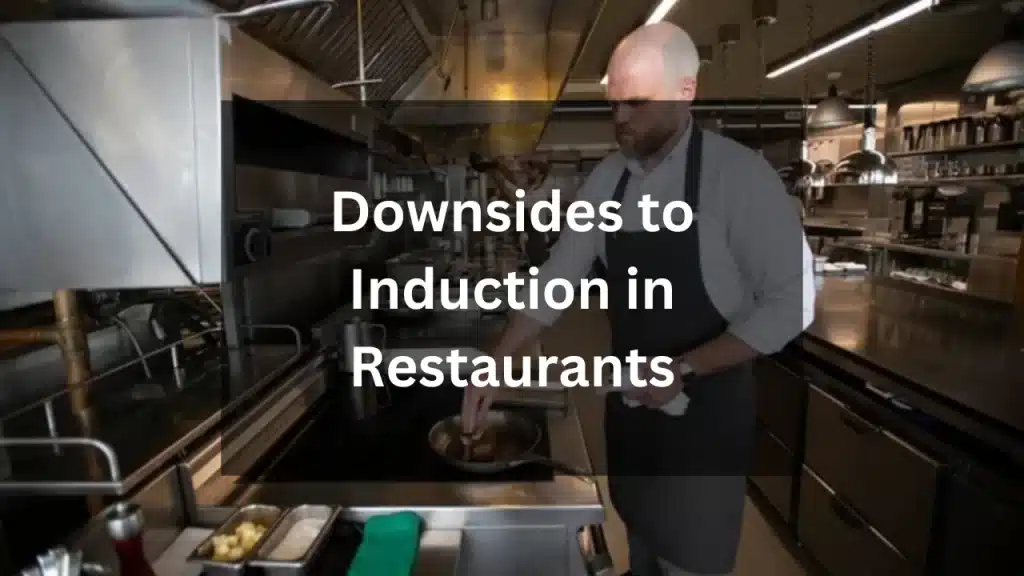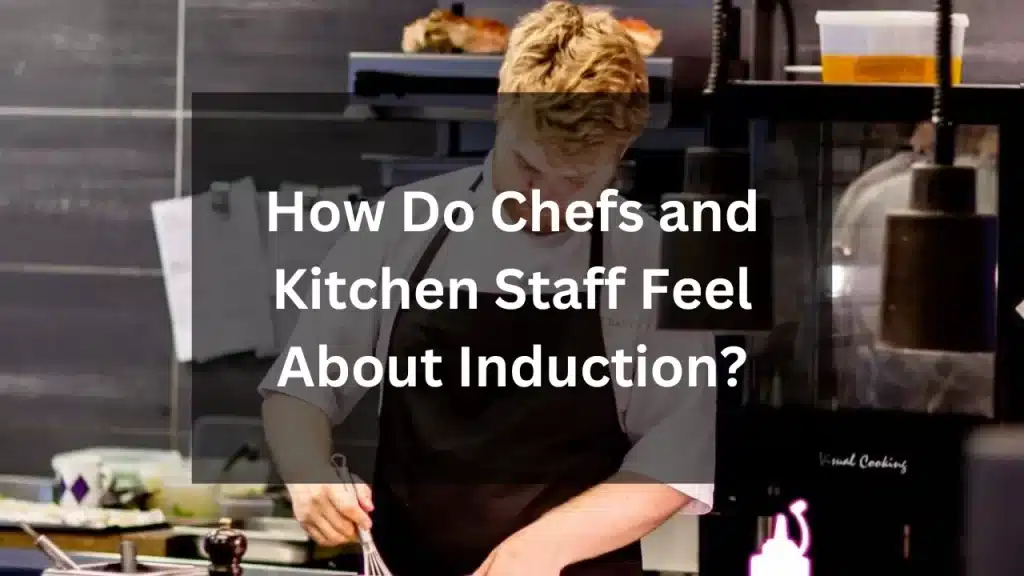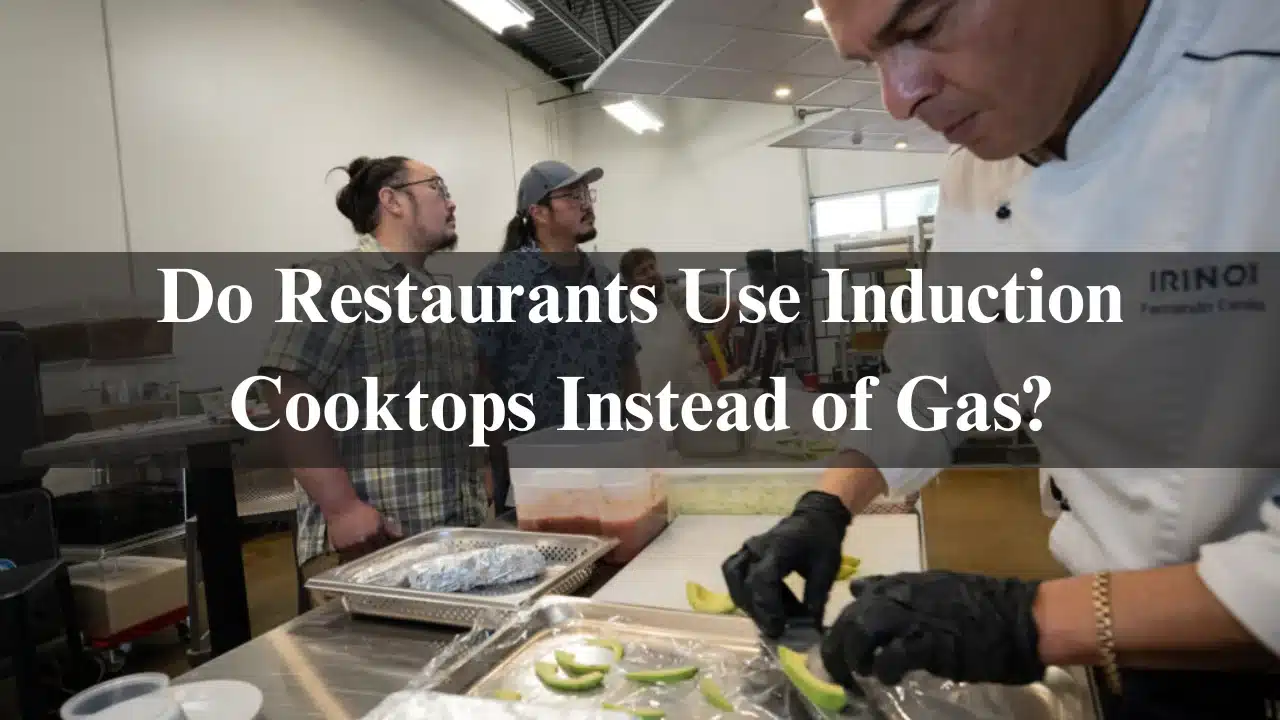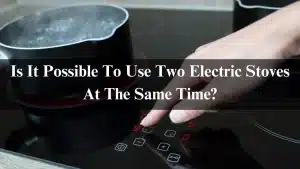In commercial kitchens, the choice of cooking equipment impacts everything from cooking speed to food quality. While gas stoves have traditionally dominated, induction hobs are emerging as a viable alternative. This article explores whether induction hobs can replace gas in restaurants.
Table of Contents
Induction vs. Gas vs. Electric Cooktops
| Cooktop Type | Energy Efficiency | Cooking Speed | Pros |
| Gas | ~40% | Moderate | Versatile, high heat potential |
| Electric | ~70% | Slow | Widely available, simple to use |
| Induction | ~90% | Fast | High efficiency, fast heat response |
Induction cooking offer faster cooking times and more consistent heat compared to both traditional electric and gas stoves. Gas stoves, however, provide an open flame and are compatible with most cookware, making them a popular choice for many chefs.
Why Gas Stoves Are the Traditional Choice in Restaurants?
Gas stoves have long been favored in restaurants for their visual control with open flames and high-heat capabilities, essential for methods like sautéing and charring. Despite newer technologies, many chefs still prefer gas for its intuitive and traditional cooking experience.

Why Restaurants Are Switching to Induction?
Efficiency and Speed
In fast-paced kitchens, time is crucial. Induction’s ability to heat cookware instantly helps chefs begin induction cooking immediately, reducing wait times and increasing kitchen efficiency during peak hours.
Induction’s Fast Cooking: Since induction heats cookware directly, there’s no wasted heat, leading to faster cooking times. This helps chefs keep up with high-demand service periods.
Energy Efficiency and Cost Savings
Induction hobs are more energy-efficient than gas stoves, using electricity more effectively. Energy savings lead to lower utility bills, which is important for cost-conscious restaurant owners.
Reducing Energy Bills: Because induction heats cookware directly, there’s no loss of heat to the surrounding air. This not only lowers energy consumption but also helps maintain a cooler kitchen environment, reducing air conditioning costs.
Environmental Impact
Induction cooktops run on electricity, which can be sourced from renewable energy, reducing the restaurant’s carbon footprint. Unlike gas stoves that emit carbon dioxide, induction cooktops are more eco-friendly, aligning with sustainability goals.
Precision and Control
Induction hobs provide exact temperature control, which is crucial for delicate dishes. For chefs, the ability to set precise heat levels ensures consistency and high-quality results.
Temperature Control Compared to Gas: Induction allows for precise temperature settings, which is more difficult with gas stoves. For dishes requiring consistent heat, induction is superior.
Safety Benefits
Induction hobs are safer than gas stoves. Without an open flame, the risk of fires or burns is significantly reduced. This makes induction particularly appealing in open kitchens where customers can observe cooking.
Lower Risk of Accidents: Induction cooktops remain cooler than gas stoves, reducing the risk of burns, particularly in busy kitchens.
Downsides to Induction in Restaurants
Although induction has many benefits, there are also some challenges that could deter restaurants from adopting it.

Cost of Installation and Equipment
Induction hobs require a larger initial investment compared to gas stoves. The upfront cost of installing induction cooktops and purchasing compatible cookware can be substantial.
Initial Setup Costs: While induction hobs have lower energy costs over time, the initial installation cost can be higher than gas, especially considering the need for specific cookware.
Cookware Compatibility
Induction hobs require magnetic cookware, such as cast iron or stainless steel. This means that restaurants need to replace existing pots and pans, increasing the transition cost to induction.
Only Certain Cookware Works with Induction: Only pots and pans with magnetic bases are compatible, limiting cookware options.
Types of Restaurants Using Induction Cooktops
Induction hobsare increasingly popular in certain restaurant types, especially where energy efficiency, precision, or limited space are priorities.
Fine Dining Restaurants
Induction is favored in fine dining because of its precise temperature control, which is essential for delicate dishes. Additionally, induction’s sleek appearance complements upscale kitchen aesthetics.
Small Cafés and Coffee Shops
For small kitchens, induction is ideal because it generates less heat and offers space-saving benefits. Induction cooktops’ compact size fits well in smaller establishments.
Eco-Friendly Restaurants
Induction hobsare a natural fit for sustainable restaurants aiming to reduce their environmental impact. Their low emissions and energy efficiency align with the goals of green-focused eateries.
How Do Chefs and Kitchen Staff Feel About Induction?
Chefs’ and staff members’ experiences with induction cooking vary, with a mix of benefits and challenges.

Advantages Noted by Chefs
Chefs appreciate induction for its energy efficiency, quick heat-up time, and precise temperature control. Additionally,Smooth-top induction cooktops cool down quickly, reducing the risk of accidental burns.
Challenges Reported by Staff
The transition to induction may involve a learning curve, especially for chefs accustomed to gas stoves. It can take time to adapt to induction’s heat response and temperature control.
Comparing Cooking Performance: Induction cooking vs. Gas for Common Restaurant Dishes
| Cooking Technique | Gas Performance | Induction Performance |
| Searing | Excellent | Good |
| Simmering | Moderate | Excellent |
| Stir-Frying | Excellent | Moderate |
| Baking | Good (in ovens) | Moderate (in ovens) |
Searing and Stir-Frying: Gas stoves excel in high-heat cooking methods like searing and stir-frying, as they provide direct flame.
Simmering and Low-Heat Cooking: Induction cooking is superior for low-heat cooking, offering consistent temperatures for delicate sauces or long simmers.
Health and Safety: Is Induction Safer for Restaurant Kitchens?
Induction cooktops are safer than gas stoves, which pose risks of open flames, gas leaks, and burns. Induction’s lack of an open flame significantly reduces the chances of accidents.
Safety Benefits of Induction: Induction hobs remain cool to the touch and automatically turn off when cookware is removed, minimizing fire risks.
Will Gas Be Phased Out in Restaurant Kitchens?
As environmental goals and energy efficiency become more important, induction may see wider adoption in restaurants. Local regulations and incentives may also drive restaurants toward cleaner technologies like induction.
Sustainability Legislation: Cities and states may promote induction cooktops through regulations or tax incentives, encouraging restaurants to make the switch.
Case Studies: Restaurants Using Induction
Several restaurants have already adopted induction Heating technology due to its energy efficiency, precision, and safety. These case studies demonstrate how induction can improve kitchen operations and align with sustainability goals.
Conclusion: Is Induction a Good Choice for Restaurants?
For many restaurants, induction cooking offer a combination of efficiency, precision, and safety that make them a smart choice. While gas stoves remain popular for certain cooking techniques, the advantages of induction, especially in terms of energy efficiency and control, make it a strong contender for modern kitchens.
Related Articles:
Why Do Most Chefs Prefer Gas Cooktops? Latest Update 2024
Are Induction Cooktops More Energy Efficient? Comparison 2024
FAQs
Can a magnetic heat cooktop handle a busy restaurant kitchen?
Yes, magnetic cooktops are efficient and can handle high-volume cooking, provided the cookware is compatible.
Are inductionhobs more expensive than gas?
Induction hobshave higher initial costs, but energy savings can offset the upfront investment over time.
Is there a learning curve for chefs switching to induction?
Chefs may need some time to adjust, but many find induction’s speed and precision worth the learning curve.
Which types of restaurants use induction?
Induction is popular in fine dining, eco-friendly restaurants, and small establishments with limited space.




